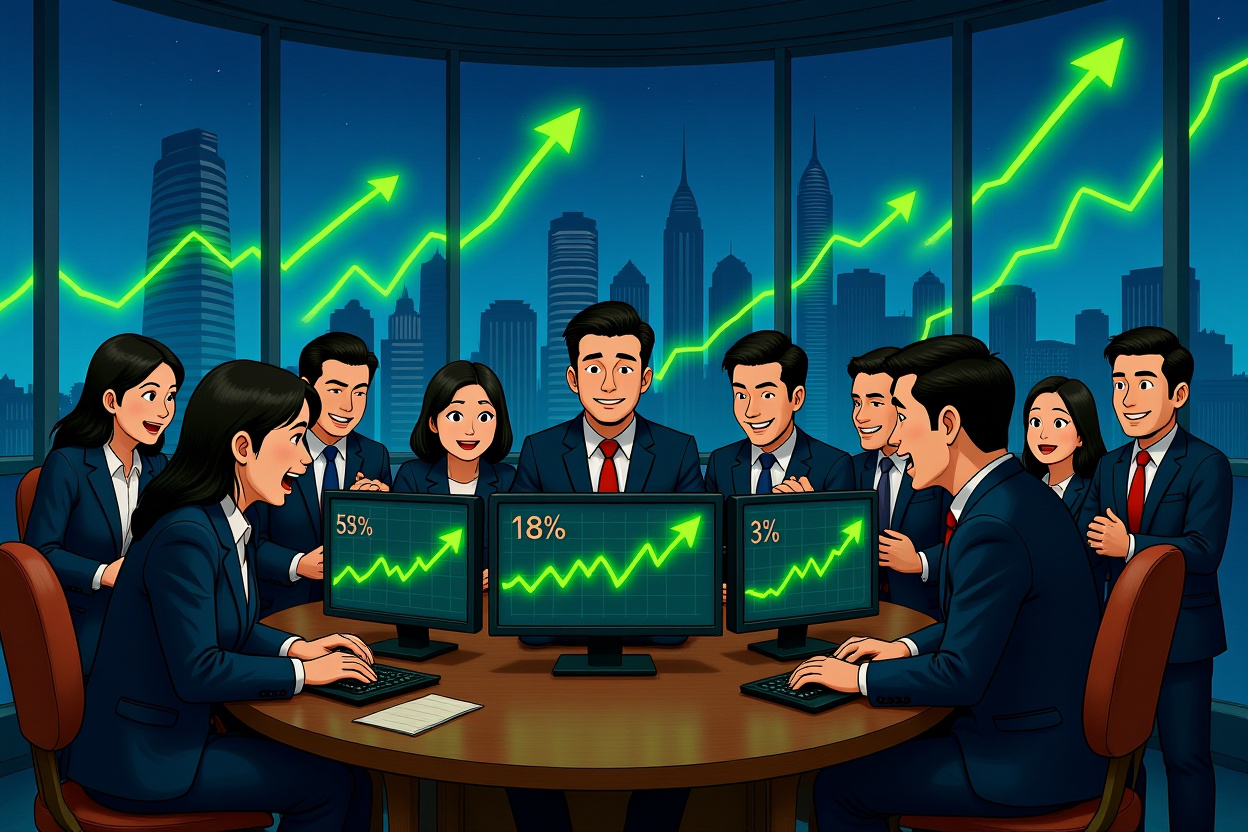Financial markets are no strangers to volatility, but few events capture attention like a dramatic overnight market surge. These rapid upward movements, often triggered by breaking news or macroeconomic shifts, can reshape portfolios and investor sentiment within hours. Understanding the mechanics behind these surges is critical for both retail and institutional players seeking to capitalize on momentum or mitigate risks. This analysis delves into the catalysts, patterns, and strategic responses to sudden market rallies, offering a roadmap for navigating these exhilarating yet unpredictable phenomena. The recent overnight market surge observed across Asian and U.S. exchanges serves as a timely case study in how modern markets react to concentrated positive stimuli.
What Triggers an Overnight Market Surge?
Key Catalysts Behind Rapid Rallies
An overnight market surge rarely occurs without a catalyst. Common triggers include:
– Unexpected positive earnings reports from major corporations
– Central bank policy announcements, such as interest rate cuts or quantitative easing measures
– Breakthroughs in geopolitical negotiations (e.g., trade deals or tariff reductions)
– Technological or sector-specific news, such as regulatory approvals or patent announcements
– Macroeconomic data surprises, like better-than-expected employment figures or GDP growth
These catalysts often emerge after regular trading hours, causing futures markets and overseas exchanges to react first. The resulting momentum frequently spills over into the next trading session, creating a sustained rally. For instance, the recent overnight market surge in Hong Kong and U.S. futures was largely attributed to softer-than-expected inflation data from a major economy, suggesting delayed monetary tightening.
The Role of Algorithmic Trading
Modern markets are increasingly driven by algorithms that execute trades based on pre-programmed conditions. When significant news breaks, these systems can trigger massive buy orders within milliseconds, accelerating the overnight market surge. High-frequency trading firms and institutional algorithms often amplify initial movements, creating a feedback loop that extends gains. This automated response explains why some surges appear disproportionate to the triggering event itself.
Global Market Interconnections
Cross-Border Spillover Effects
An overnight market surge in one region frequently influences others due to the interconnected nature of global finance. For example:
– A rally in U.S. futures often lifts Asian markets the following day
– Strong performance in European benchmarks can boost U.S. pre-market trading
– Commodity price movements (e.g., oil or copper) create ripple effects across equity markets
This interdependence means investors must monitor international developments even outside local trading hours. The recent overnight market surge demonstrated this clearly, with gains in Chinese tech stocks fueling optimism in Nasdaq futures.
Currency and Commodity Correlations
Sudden equity rallies often coincide with currency fluctuations and commodity price shifts. A risk-on sentiment might weaken safe-haven currencies like the Japanese Yen while strengthening commodity-linked currencies like the Australian Dollar. Similarly, industrial metals and energy commodities may rise alongside equity indexes, reflecting broader economic optimism.
Sector Performance During Surges
High-Beta Outperformers</h3
Not all sectors benefit equally from an overnight market surge. High-beta sectors—those more sensitive to market movements—typically lead gains. These include:
– Technology stocks, especially growth-oriented names with elevated valuations
– Consumer discretionary companies, which thrive in optimistic economic environments
– Financials, particularly when the surge is interest-rate-sensitive
– Small-cap stocks, which often outperform due to higher risk appetite
During the latest overnight market surge, tech and renewable energy stocks notably outperformed, gaining between 5-8% in pre-market trading.
Defensive Laggards
While high-beta sectors soar, defensive areas like utilities, consumer staples, and healthcare often underperform during sudden rallies. Investors temporarily rotate out of these safe havens to chase higher returns in riskier assets. This rotation can create buying opportunities in defensive stocks once the initial surge stabilizes.
Trading Strategies for Sudden Rallies
Momentum Riding vs. Profit-Taking
Investors face a dilemma during an overnight market surge: ride the momentum or take profits. Key considerations include:
– Evaluating whether the catalyst justifies sustained gains or represents short-term euphoria
– Assessing technical indicators like relative strength index (RSI) to identify overbought conditions
– Reviewing volume data to confirm whether institutional players are participating
Historical data suggests that surges accompanied by high volume and broad sector participation tend to have longer-lasting effects.
Options and Futures Strategies
Derivatives traders often use futures and options to capitalize on overnight moves. Common approaches include:
– Buying call options ahead of expected news events
– Trading futures contracts to speculate on index movements
– Implementing volatility strategies like straddles when major announcements are anticipated
These instruments provide leverage but require sophisticated risk management due to their sensitivity to timing and volatility.
Risks and Pitfalls
False Breakouts and Reversals
Not every overnight market surge leads to a sustained bull run. Some represent false breakouts, where prices quickly revert to pre-surge levels. Warning signs include:
– Narrow participation (only a few stocks driving index gains)
– Divergence between price and trading volume
– Contradictory signals from bond markets or economic data
Investors should avoid chasing rallies without confirming broader market health.
Overtrading and Emotional Decisions
The excitement of an overnight market surge can trigger impulsive decisions. Traders might:
– Enter positions without proper due diligence
– Overleverage accounts to amplify gains
– Ignore stop-loss levels or risk management rules
Maintaining discipline through pre-defined entry/exit strategies is crucial during volatile periods.
Long-Term Implications
Market Cycle Considerations</h3
While overnight surges create short-term opportunities, they also provide clues about broader market cycles. A series of surges might indicate:
– Early stages of a bull market
– Sector rotation into new leadership groups
– Changing investor sentiment toward risk assets
Analyzing these events within larger trends helps distinguish between tactical opportunities and strategic shifts.
Policy and Regulatory Impacts
Significant market movements often attract regulatory attention. Authorities may:
– Investigate potential insider trading or market manipulation
– Adjust monetary or fiscal policies in response to market signals
– Implement circuit breakers or volatility controls if surges become excessive
These responses can alter market dynamics long after the initial surge subsides.
Navigating Future Surges
The overnight market surge phenomenon underscores the importance of preparedness in modern investing. By understanding catalysts, intermarket relationships, and strategic responses, investors can better position themselves for sudden movements. While not every surge will evolve into a sustained trend, recognizing the difference between noise and meaningful momentum separates reactive traders from strategic allocators.
Moving forward, investors should maintain watchlists of event-sensitive stocks, develop contingency plans for breaking news, and balance enthusiasm with rigorous risk management. The markets will continue to surprise, but disciplined participants can turn volatility into opportunity. For real-time alerts on market-moving events, consider subscribing to specialized financial news services or following central bank communications directly.




